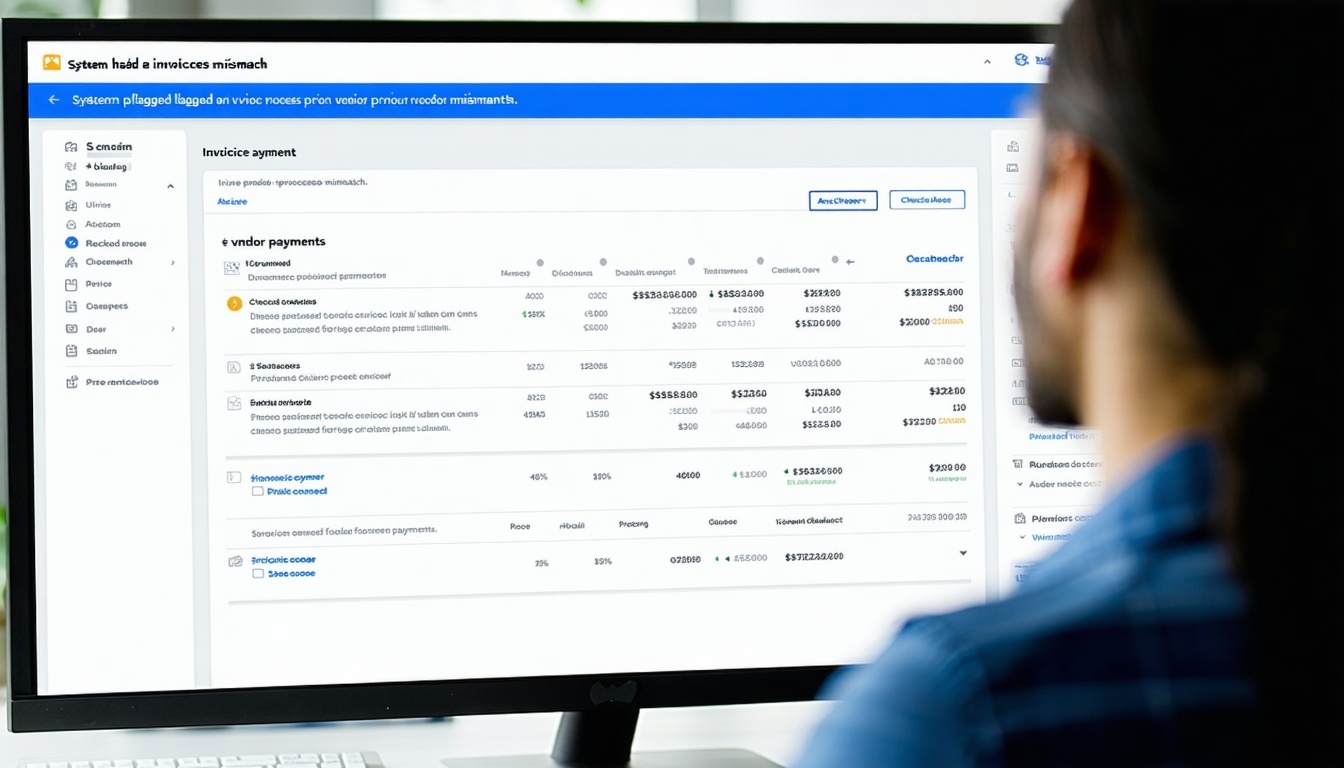How AI is quietly transforming Accounts Payable – and why it’s happening inside SAP

The invoice that stopped everything
It started with a single invoice.
A vendor had changed banks, but no one had updated the master data. The PO was fine. The goods had been received. But the invoice got stuck.
And with it, so did the payment. The AP clerk flagged it. Procurement was pulled in. Finance escalated. Days passed.
All this for one document.
But what if the system had flagged the mismatch, checked prior vendor payments, suggested the right GL code and routing, and resolved the issue before anyone noticed?
That’s not a fantasy anymore. It’s what modern invoice management powered by AI is starting to deliver—especially when it lives natively within SAP.
The hidden cost of “almost automated”
Most companies think they’ve automated invoice processing. After all, invoices come in electronically, they’re scanned, maybe routed via a workflow.
But talk to the people in AP, and a different picture emerges:
- 60–70% of invoices still need human touch.
- Non-PO invoices sit for days waiting on coding.
- Exceptions derail entire payment cycles.
- Month-end close turns into a scramble.
Why? Because the system lacks intelligence. It doesn’t understand why this invoice is different from the others, or what is required to resolve the exception. It can’t tell which vendor address should be used, the history with the PO, or what coding decisions were made last time.
Enter AI: Not just smarter capture — smarter understanding
AI’s first appearance in AP was about OCR. That’s old news.
What’s changing now is the use of learning systems to actually make decisions inside SAP:
- Propose GL codes and cost centres based on patterns
- Match PO line items with near‑perfect accuracy
- Resolve exceptions by following natural‑language procedures
- Surface insights from large invoice volumes (Who causes the most delays? Where do we miss early‑payment discounts?)
With services such as SAP Document Information Extraction and SAP Business AI running on the SAP Business Technology Platform (BTP), these capabilities sit natively in your SAP core – no exports, no duplication, no custom bolt‑ons.
But here’s the trick: AI doesn’t work in isolation. It needs content + context.
What context really means — and why it matters
Think about what lives around every invoice:
- The PO
- The contract
- The vendor master
- Delivery confirmations
- Emails, conversations, notes, workflows
- Typical resolution steps for common exceptions
If these documents are fragmented – stored in email, SharePoint, or network drives – the AI can’t reason properly. It’s like trying to solve a puzzle with half the pieces missing.
That’s where Qellus makes the difference.
We connect invoices, structured SAP data, and surrounding business content using SAP Document Management service (BTP) and standard SAP integration frameworks. Every invoice is processed in full context – without leaving the SAP landscape.
This isn’t just AP automation — it’s S/4‑readiness
Here’s what few people talk about when planning an SAP S/4HANA move: your custom code, broken workflows, and manual workarounds will be a problem. Clean core is non‑negotiable. Every manual invoice touch‑point becomes a liability.
By modernising invoice management with OpenText VIM, Smart Coding, and lean BTP extensions, companies reduce complexity before the move – and reap benefits now.
- Reduced invoice cycle times by 40 %
- Unlocked early‑payment discounts worth millions
- Removed the need for custom transports entirely
All while laying a foundation for SAP’s co‑pilot Joule, which will draw directly from this structured, contextualised invoice data.
What it looks like to get started
This transformation doesn’t have to be massive or risky. In fact, the fastest path is usually:
- Start the conversation - Schedule a 30-minute intro call. We'll listen to your challenges and explain what we do.
- See the future -We'll give you a proven blueprint for transforming your document and data processes.
- Transform your business - With a clear path to success, your digital transformation accelerates and your business runs at its best.
That's invoice autonomy. Ultimately, the goal isn’t just fewer hands-on invoices—it’s systems that handle the complexity for you.
The invoice that got stuck?
In our client’s case, that wasn’t the last one. But it was the last one that surprised them.
Today, invoices are read, understood, and processed – often without human involvement. And when things go wrong, the system explains why, suggests a fix, and keeps the cycle moving.
That’s the kind of transformation SAP was always meant to deliver. And thanks to AI + VIM + Qellus, it’s happening – one invoice at a time.